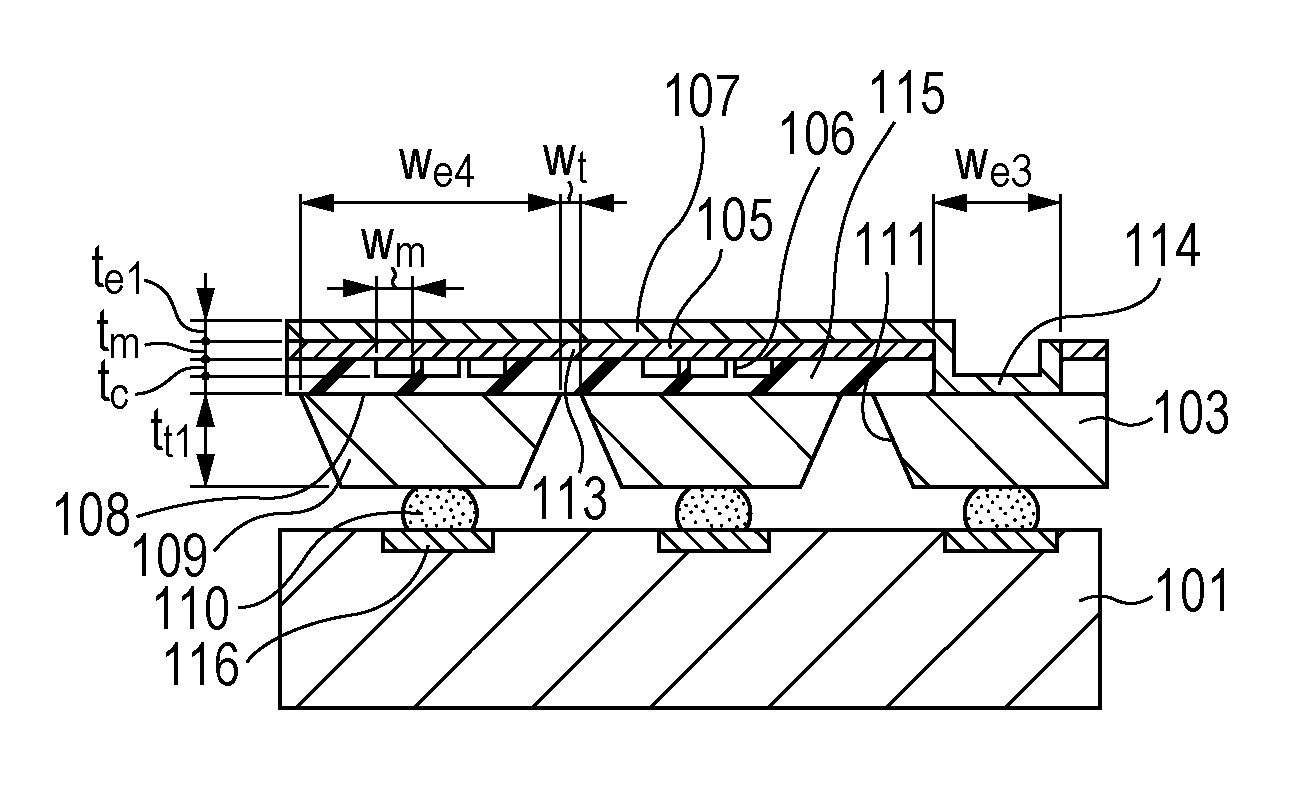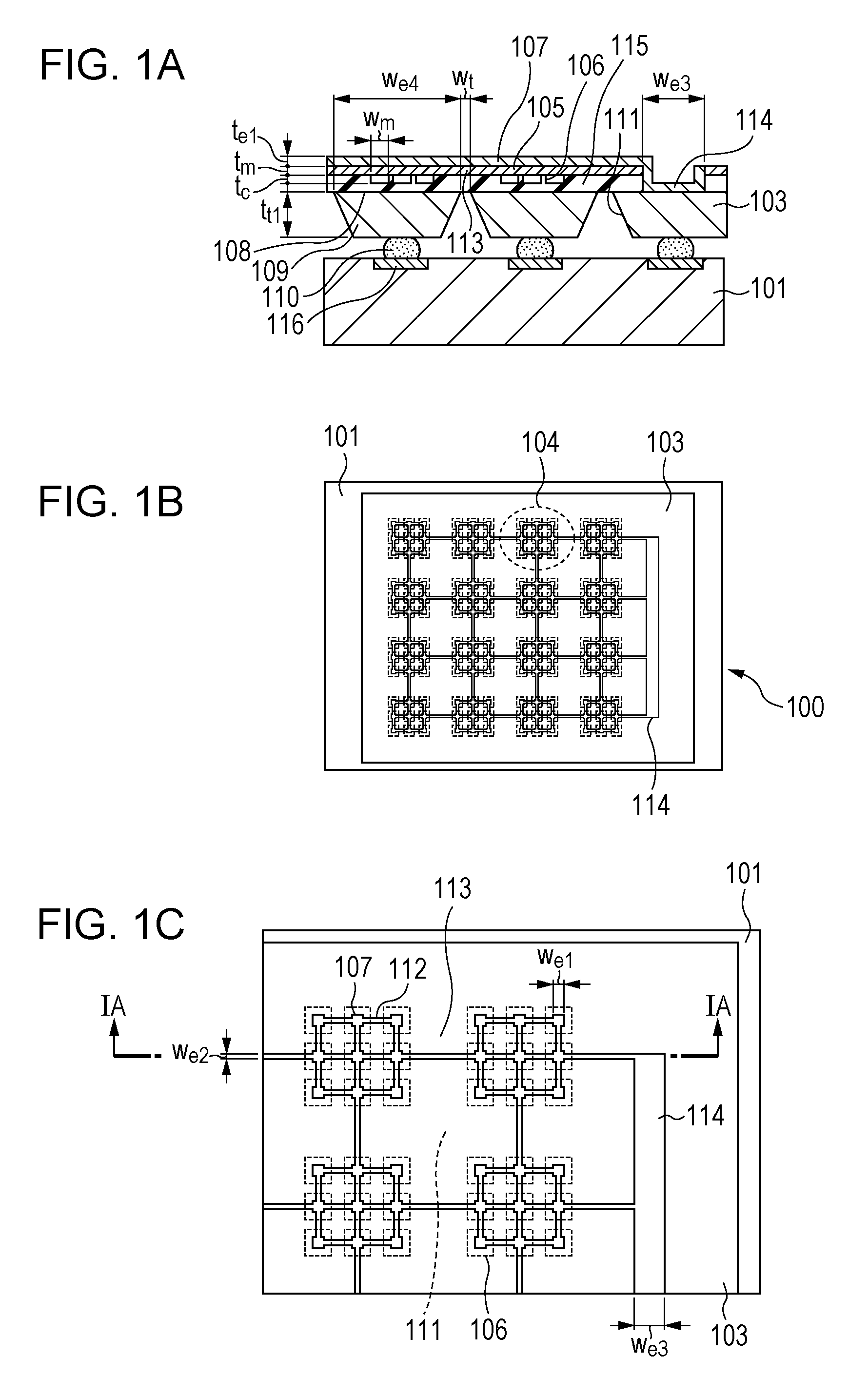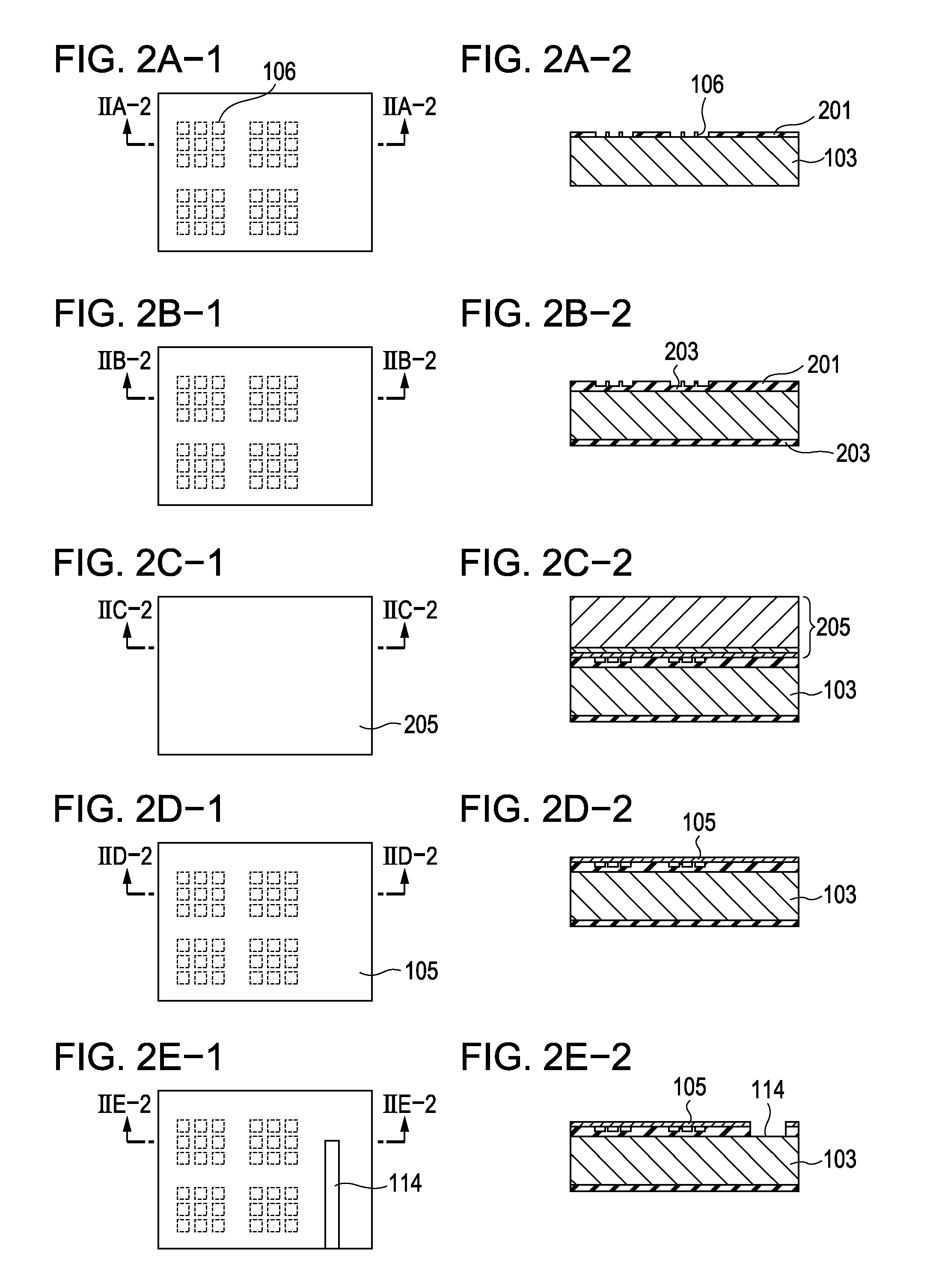Electromechanical transducer device and method of making the same
a transducer and electromechanical technology, applied in the direction of electrical transducers, mechanical vibration separation, influence generators, etc., can solve the problems of limited number of cavities that can be formed per unit area of substrates, inability to form cavities, and difficulty in supporting cavities, etc., to achieve sufficient width, reduce parasitic capacity, and high density
- Summary
- Abstract
- Description
- Claims
- Application Information
AI Technical Summary
Benefits of technology
Problems solved by technology
Method used
Image
Examples
first embodiment
[0022]Referring to FIGS. 1A to 1C, a first embodiment will be described. The first embodiment is a capacitance-type ultrasonic transducer device that includes a silicon substrate in which elements are separated by grooves and a membrane 105 is made by joining a silicon-on-insulator (SOI) substrate to the silicon substrate. FIG. 1A is a sectional view of an electromechanical transducer device 100 according to the first embodiment. As illustrated in FIG. 1A, the electromechanical transducer device 100 includes a circuit board 101 and a silicon substrate 103. The circuit board 101 is disposed directly below the silicon substrate 103.
[0023]FIG. 1B is a top view of FIG. 1A. As illustrated in FIG. 1B, the electromechanical transducer device 100 according to the first embodiment includes 4×4 elements 104. A region surrounded by a dotted line in FIG. 1B corresponds to one of the elements 104. Each of the elements 104, which is a capacitance-type electromechanical transducer element, individ...
second embodiment
[0029]A second embodiment will be described. The embodiment relates to a method of making the CMUT described in the first embodiment. FIGS. 2A-1 to 2I-2 illustrate a method of making a CMUT according to a second embodiment of the present invention. For convenience of illustration, sectional views of two elements are illustrated in FIGS. 2A-1 to 2I-2. Other elements can be made in the similar manner. In FIGS. 2A-1 to 2I-2, portions of the CMUT that function in the similar manner as those illustrated in FIGS. 1A to 1C are denoted by the same numerals.
[0030]First, the silicon substrate 103 is prepared. Typically, the silicon substrate 103 is a single crystal silicon, to which semiconductor processing techniques can be easily applied. The silicon substrate 103 may have a low resistivity (i.e., a certain degree of conductivity), because the silicon substrate 103 becomes the lower electrode 108 and the through-hole interconnection 109. In the second embodiment, an Si substrate having a re...
third embodiment
[0040]Referring to FIG. 3A, a third embodiment will be described. The third embodiment is a CMUT that is basically the same as that of the first embodiment, but differs from the first embodiment in that the groove 111 has a cross-sectional shape that is step-like. The groove 111 is characterized in that the groove 111 has a small width at a portion that is close to the element 104. By providing the groove 111 with such a cross-sectional shape, a larger number of cavities can be disposed while minimizing an increase in the parasitic capacity generated between the elements 104 that are adjacent to each other. FIG. 3B illustrates the groove 111 that has a larger width at a position that is away from the element 104. Although the number of cavities that can be disposed is the same as the case of FIG. 3A, the parasitic capacity between the adjacent element 104 increases, and the noise increases. The larger the average width of the groove in the depth direction, the smaller becomes the pa...
PUM
| Property | Measurement | Unit |
|---|---|---|
| width | aaaaa | aaaaa |
| width wm | aaaaa | aaaaa |
| width wm | aaaaa | aaaaa |
Abstract
Description
Claims
Application Information
 Login to View More
Login to View More - R&D
- Intellectual Property
- Life Sciences
- Materials
- Tech Scout
- Unparalleled Data Quality
- Higher Quality Content
- 60% Fewer Hallucinations
Browse by: Latest US Patents, China's latest patents, Technical Efficacy Thesaurus, Application Domain, Technology Topic, Popular Technical Reports.
© 2025 PatSnap. All rights reserved.Legal|Privacy policy|Modern Slavery Act Transparency Statement|Sitemap|About US| Contact US: help@patsnap.com



